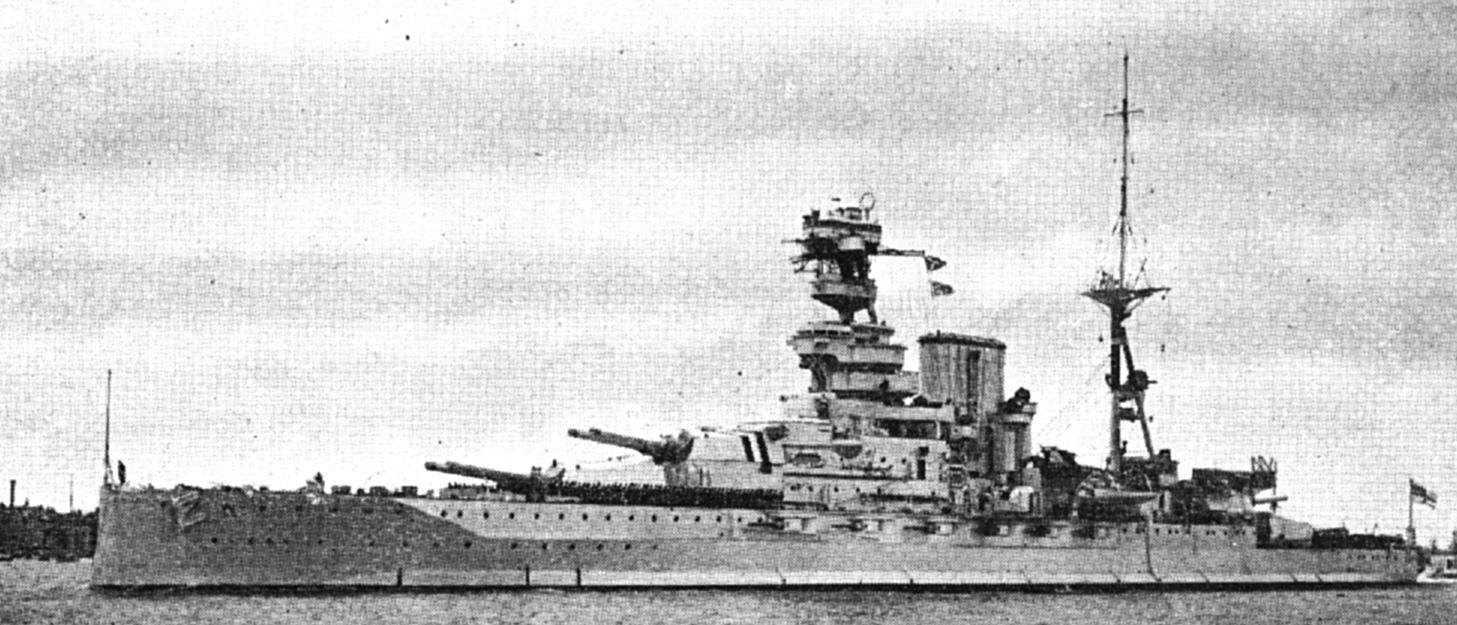
A German submarine attacked the British battleship HMS Barham with three torpedoes on November 25, 1941. The British vessel’s magazines exploded, and it rolled over and sank quickly with only 343 surviving from her crew of 1,184 officers and men. Clipart.com. Click to enlarge.
By: Phil Kohn. Dedicated to the memory of his father, GM3 Walter Kohn, U.S. Navy Armed Guard, USNR, and all men and women who have answered the country’s call in time of need. Phil can be contacted at ww2remembered@yahoo.com.
On the Eastern Front, Rostov-on-Don, in Russia — an important hub on the southern front — is taken by the Germans on November 21, 1941. In Libya, the British 70th Infantry Division attempts a breakout from Tobruk, which it accomplishes after a day of heavy fighting.
British heavy cruiser HMS Devonshire on November 22 sinks commerce-raiding German auxiliary cruiser Atlantis off Ascension Island in the South Atlantic, ending the longest warship cruise of the war. (Atlantis has been at sea for 622 days without in-port replenishment or repair). During her cruise, Atlantis has sunk 22 Allied merchant ships. The United Kingdom issues an ultimatum to Finland: End its war with the Soviet Union or it will face war with the Allies. The 2nd New Zealand Regiment captures Ft. Capuzzo, Libya, near the Egyptian border. To the west, Rommel begins a counteroffensive, re-taking Sidi Rezegh, south of Tobruk; British tank losses are heavy. In Russia, sixty trucks carry food and other supplies across Lake Ladoga on an ice road to the defenders of Leningrad. It is the first of hundreds of such truck convoys.
On November 23 the U.S. forges an agreement with the Dutch government-in-exile whereby the U.S. will occupy Surinam (Dutch Guiana) on the northeast coast of South America to protect bauxite mines there. A bomb explodes at the U.S. consulate in Saigon, Indochina. Much damage is done, but there are no injuries. German progress is being made on a 50-mile front northwest of Moscow, with some units less than 35 miles from the city. Fierce fighting occurs south of Sidi Rezegh, Libya, with the Germans and Italians suffering heavy losses; they now have fewer than 100 tanks. To the northeast, at Gambut, Libya, New Zealand infantry captures German Afrika Korps headquarters and much German communications equipment.
On November 24, the U.S. grants Lend-Lease benefits to the Free French. In the North Atlantic, German sub U-124 sinks the British light cruiser HMS Dunedin. Of a complement of 486, only four officers and 63 enlisted men survive. The Germans begin a siege of Sevastopol in Ukraine’s Crimean peninsula. In Russia, German Field Marshal Gerd von Rundstedt, concerned that his force is in an untenable situation, disobeys Hitler’s direct order to hold Rostov-on-Don and withdraws from the city. In addition to being attacked in their rear by the Red Army, von Rundstedt’s troops are short of food, fuel, ammunition, vehicles and winter clothing.
In the Mediterranean, German sub U-331 on November 25 hits the battleship HMS Barham with three torpedoes. The British vessel’s magazines explode and she rolls over and sinks quickly with only 343 surviving from her crew of 1,184 officers and men. In East Africa, Allied forces take Tadda Ridge, 7 miles from the Italian stronghold at Gondar, in northwestern Ethiopia. From Berlin, German foreign minister Joachim von Ribbentrop denounces Franklin Roosevelt as “the chief culprit of this war.” In Libya, the 7th Indian Brigade repels an attack by the German 5th Panzer Regiment at Sidi Omar, while Australian and New Zealand troops link up near Ed Duda, southeast of Tobruk.
In Washington on November 26, U.S. Secretary of State Cordell Hull delivers a note — “Outline of Proposed Basis for Agreement Between the United States and Japan,” known as “the Hull Note” — to the Japanese ambassador. The note demands, among other things, that Japan withdraw its troops from French Indochina and China and stop all other Southeast Asian incursions. The Japanese request two weeks to formulate a response. In Japan, a fleet of 33 warships and auxiliaries, including six aircraft carriers, commanded by Japanese Vice Admiral Chūichi Nagumo leaves Hitokapu Bay for Pearl Harbor under strict radio silence. In North Africa, the Germans withdraw from Sidi Rezegh, Libya, allowing the British 7th Armoured Division to retake the town. Lt. Gen. Alan Cunningham is relieved as commander of the British Eighth Army, replaced by Maj. Gen. Neil Ritchie. In the Middle East, the commandant of Free French forces in the Levant proclaims Lebanon to be “independent,” even though the country is still governed by the Free French and Allied occupation troops remain in place.
On November 27, German panzer units reach the outskirts of Moscow. The Red Army retakes Rostov-on-Don in southern Russia. The last Italian armed forces in East Africa surrender to Allied troops at Gondar, Ethiopia. In Tokyo, the official government news agency Domei Tsushinsha reports: “There is little hope of bridging the gap between the opinions of Japan and the United States.” The U.S. government issues a war warning to its overseas military commanders, advising that negotiations with Japan have reached a stalemate and that Japan might take hostile action at any moment. The Philippines, the Malay Peninsula and Borneo are listed among potential targets of a Japanese attack, but the Territory of Hawaii is not.







